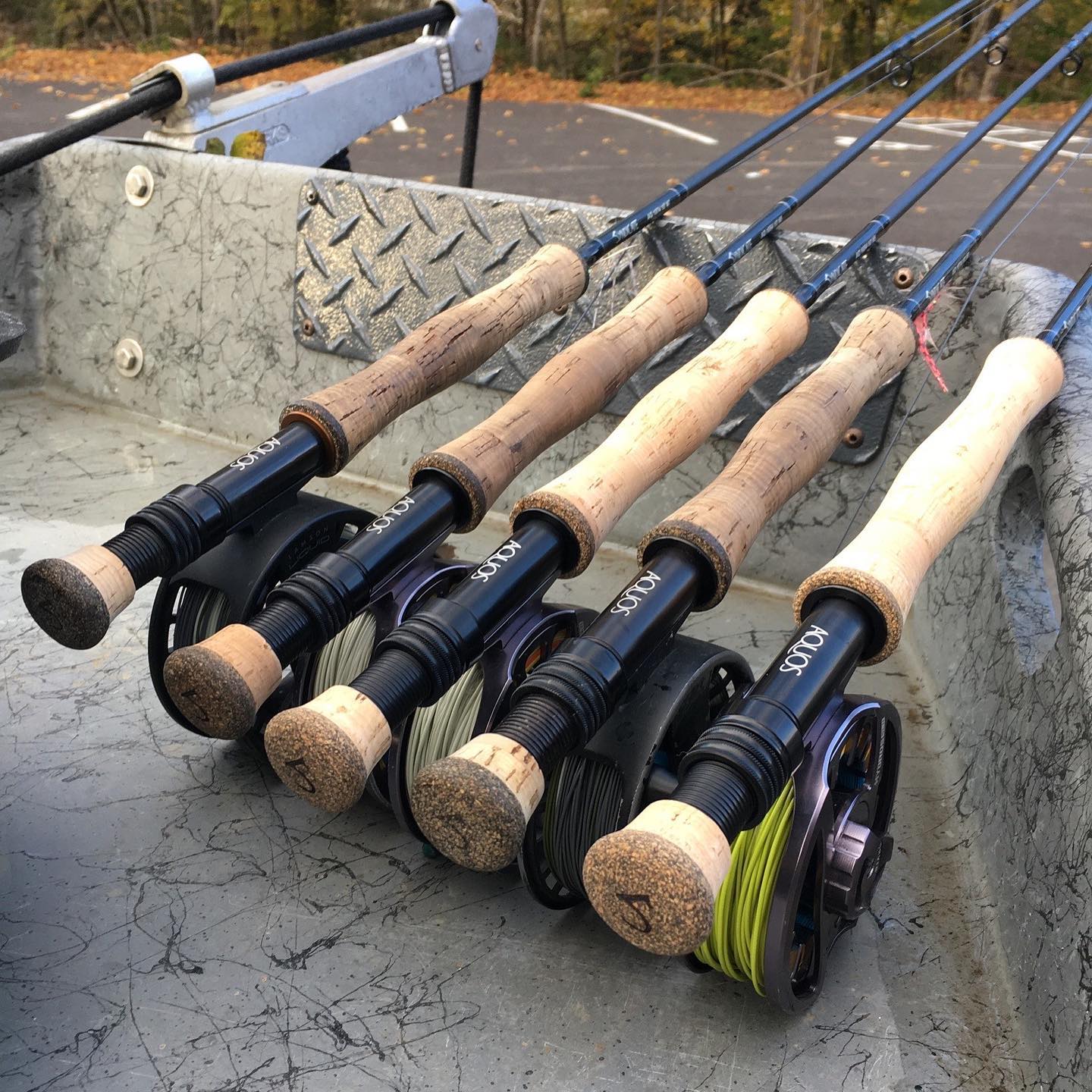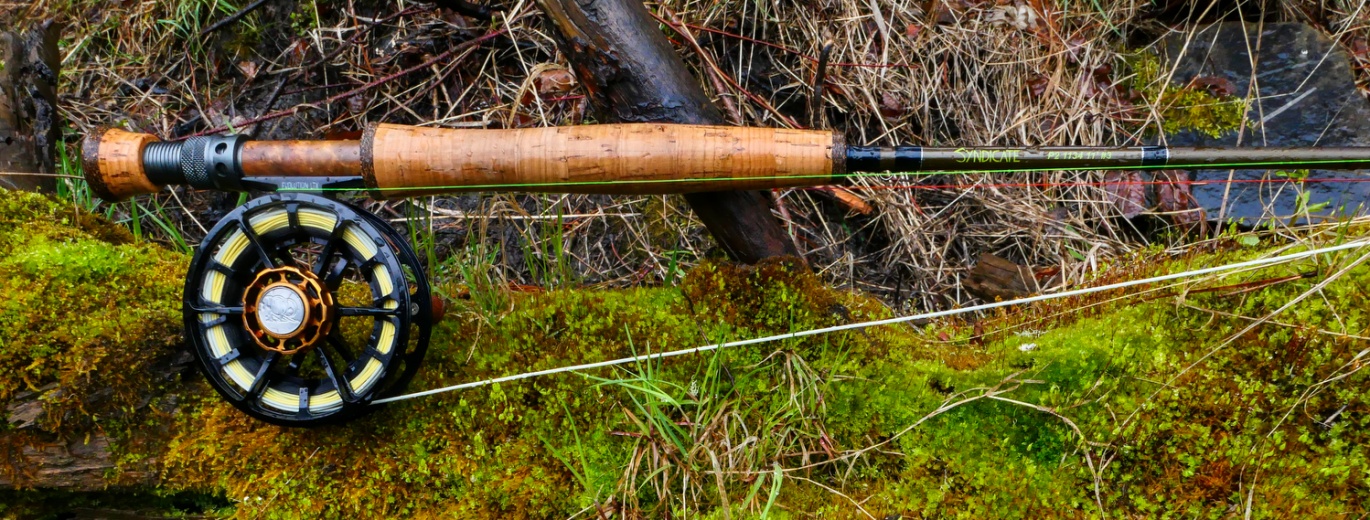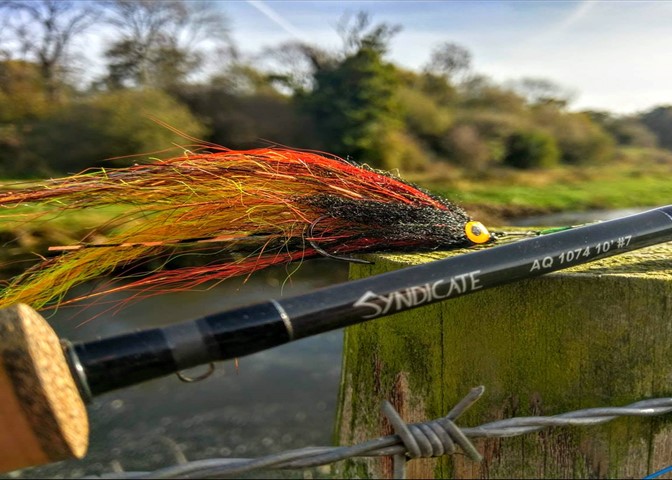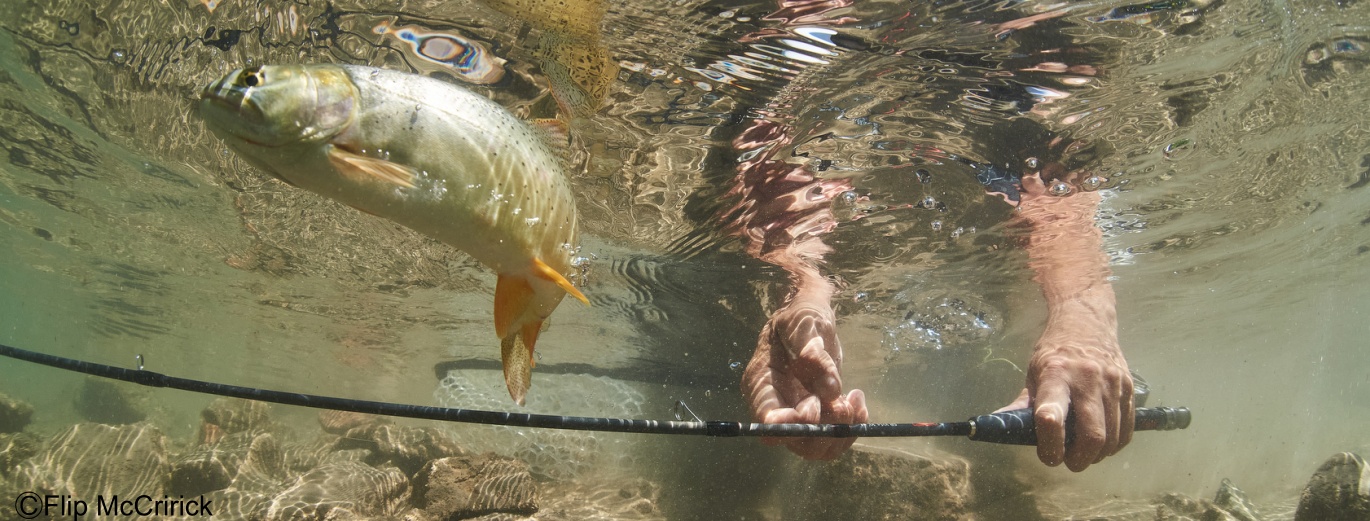How do you choose the right fly rod for you? If you are reading this, we hope that you are considering a Syndicate fly rod to fill that hole in your professional fly rod lineup. Or, if you're a beginner, we hope you are considering a Syndicate fly rod as the first rod in your collection. We understand that there are many options out there, so making the right choice is not always easy.
Here at Syndicate, we have three series of rods; Reaver, Pipeline and AQUOS. The Pipeline series rods are 10 and 11 foot lengths ranging from 2-4 weight and were designed for European Nymhing. Even though they are designed as such, they have proven to be great rods in many styles of fishing as well making it an option for well-rounded trout rod. Like the Pipeline rods, the Reaver was built specifically for European and tight-line nymphing methods, but with new and more defined components for such methods. They come in 10 and 11 foot lengths in 2-3 weights that will excel at nymphing, but are not recommended as an all-around rod due to the specific design. The AQUOS series is available in 9 and 10 foot lengths ranging from 5-9 weight and is a much better “all- arounder” rod. It can be classified as the larger game rod in our lineup, but carries some similar characteristics as the Pipeline series.
To determine which rod will be the best option for you, read the following criteria below, and always feel free to reach out to us via our Contact Us page for any questions you may have. Or stop by your local fly shop!
Remember that choosing a rod is heavily weighted by personal preference, but use this reference to aid your decision.

Pipeline Series
While each of the Pipeline P2 rods are built with a strong backbone and a softer tip, some will be better in certain situations than the others. The following criteria should be considered when choosing the right European nymphing rod to fit your needs.

10 or 11-foot length:
The biggest difference between the 10 and 11-foot rods is, of course, the extra foot of reach. For fishing big rivers, the 11-foot model is ideal to be able to work the water effectively with less wading. On the other hand, that extra foot can become a burden on smaller creeks and streams, as it can be too long. It does make a difference while crawling through the brush! Both models are sensitive in their own right, but a longer rod can take a bit longer to recover after a cast. The longer rod can also translate to a slightly longer response time, as there is a longer distance to travel from rod tip to handle. While this is a minute difference and should not deter you from trying the 11-foot rod, it is worth a mention. Also important is that the longer rod can benefit a “casting” stroke with a higher starting point and better rod load during a water haul. At the same time, the 11-foot rod does entail a slightly stronger backbone due to an extended taper that results in a stiffer feel and the ability to handle larger fish.
2, 3, or 4-weight:
It is important to note that the Pipeline series rods were built specifically for European Nymphing. The weight designation is not typical to the standard fly rod. For example, a 3-weight P2 rod will act like a 3 weight at the tip, but has a much stronger butt section. This allows for a soft tip that protects small tippets and has maximum sensitivity, while still providing a strong backbone for fighting fish.
The weight of the rod should be considered and based upon the size of the fish you will target, and also the flies you fish most. In general, if you fish mostly small, lightweight flies, the lighter rod may prove to be a better option. The opposite also applies with big, heavy flies. This idea translates to the size of the fish that you will target.
While the following specifications are merely guidelines, they can be considered as a general rule of thumb for rod size determination.
- Lightweight flies and smaller fish (up to ~14 inches) use the 2-weight.
- Light to medium flies and small to big fish (~14-22 inches) use the 3-weight
- Heavy flies and medium to large fish (~16+ inches) use the 4-weight
It is true that you can catch large fish on 2 and 3-weight rods, but what it really boils down to is the amount one must play the fish on a lighter rod. In a catch and release situation, it will be best to use a heavier rod, but a light rod will make the small fish more fun!
The Pipeline P2 rods were designed for the European Nymphing, but they have turned out to be great at many styles. Don’t be shy when it comes to tying on a couple nymphs, and indicator and split shot with the 10-foot 4-weight or even to experience the great options with casting dry flies. Dry-dropper rigs, or even single dry fly setups will cast with ease and the bow-and-arrow cast under bushes with a 2 or 3-weight will happen with ease. When in doubt, contact us with questions.
9 foot 3 weight
An exciting addition to the P2 Pipeline series rods is the 9 foot 3 weight model. This model was created based on the original taper but shortened to provide that extra bit of power, especially for dry-dropper methods of fishing. This is a great small to medium-stream rod that carries the same strong backbone as the rest of the Pipeline rods, as well as the tippet protecting tip section they are well known for. Small dry flies, dry-dropper rigs, and small stream tight line rigs will excel with the 9 foot 3 weight.
To shop our P2 fly rods, visit the P2 Pipeline Pro Series page.
The AQUOS series rods were designed around the requests for a great Loch Style Stillwater rod. Like the Pipeline series, the AQUOS series rods are built with a powerful butt section and a softer tip section. This allows for the same tippet protection while still harnessing the power to get big flies, and fish, where you want them, without the clunky feel of casting heavy rigs with a fast action rod. It started with a 10-foot model of a 6 and 7 weight to accommodate the loch style, Stillwater angler. Soon, the taper evolved into a 5 and 8 weight model, both in 10 foot lengths as well. What began as the perfect loch style rod soon became a great option for all types of fishing, especially with the latest addition of the 9 foot 5 weight and 9 foot 9 weight.

When choosing the correct AQUOS rod for you, take the following ideas into consideration:
9 foot 5 weight:
This is known as the all-around trout rod that also crosses over into some warm water situations, such as for bass. The 9-5 will excel with traditional style nymph rigs, dry flies and dry-dropper rigs. The medium-fast style of this rod will load easily with light rigs, handle the heavy ones and also handle large fish on the smallest tippets. This is the ideal rod for the angler looking to take one rod to the trout stream and be able to do it all.
10 foot 5 weight:
The big brother to the 9-5, this is the rod for the angler looking to nymph with indicators, split shot, and multiple flies. The extended length means extra reach for high sticking and easy mending. This is not the ideal rod for small dry fly situations, but it does handle, dry-dropper, dry-double dropper, and streamer rigs with ease. It can be seen as the heavy duty trout rod.
10 foot 6 weight:
For many a Stillwater angler, this is the ideal rod for loch, bank, and standard boat fishing. The 10 foot length is great for casting from a seated position while the strength of the rod excels at carrying heavy lines and flies. The 10-6 has also proven it’s ability to be a workhorse for heavy duty trout fishing with nymph rigs, streamers, and bass poppers too! On the boat with sinking lines, on foot chucking streamers or large dries, and even chasing bass with poppers, the 6 weight will do it.
10 foot 7 weight:
This is where the real heavy weight game starts. The 7 weight is your option for big, air resistant flies, Stillwater, and a crossover into some saltwater applications. For the still water angler, the 7 weight has enough power to carry the heaviest sinking lines, but also the sensitive tip to prevent fish from “bouncing off” the hook during a hook set as with many fast action rods. This is a great option for having 1 rod to chase trout, bass, pike, musky, salmon, steelhead, bonefish, redfish and so many more species with.
10 foot 8 weight:
Take the 7 weight and add more power, that is the 8 weight. This is the ultimate salmon and steelhead nymphing stick with the ability to handle big game in fresh and salt water. While still having plenty of power, the 8 weight makes casting big, heavy rigs so smooth by absorbing the weight in each cast. Say goodbye to the clunker!
9 foot 9 weight:
The 9 foot 9 weight was added to meet the demand of the saltwater angler, especially the traveling one. In true AQUOS fashion, the 9 weight comes with plenty of power, but still has the slower action tip. For the flats angler, this is great for loading at close range, unlike a fast action rod, but also having the ability to drop a long cast on target. This is a great option for permit, bonefish, snook, redfish, juvenile tarpon, and many more species found on the flats. In the freshwater, it excels at casting large baitfish patterns for pike and musky too!
To shop our Aquos fly rods, visit the Aquos Series Fly Rod page.
Reaver Series
The Reaver series fly rod is our new premium European Nymphing Rod that was designed seat to tip for tight line nymphing. The revolutionary 3D printed grip that resonates feel, an extra guide for improved line control, a pure titanium reel seat for easy balancing, and a thinner rod blank make them excel at contact nymphing. For a complete overview of the Reaver series rods, click here.
The Reaver series rods are built around the same idea as the Pipeline series. For this reason, the recommendations for choosing which one is right for you will be the same as the Pipeline series. Please refer to the Pipeline section above for how to choose the right Reaver rod for your needs.

